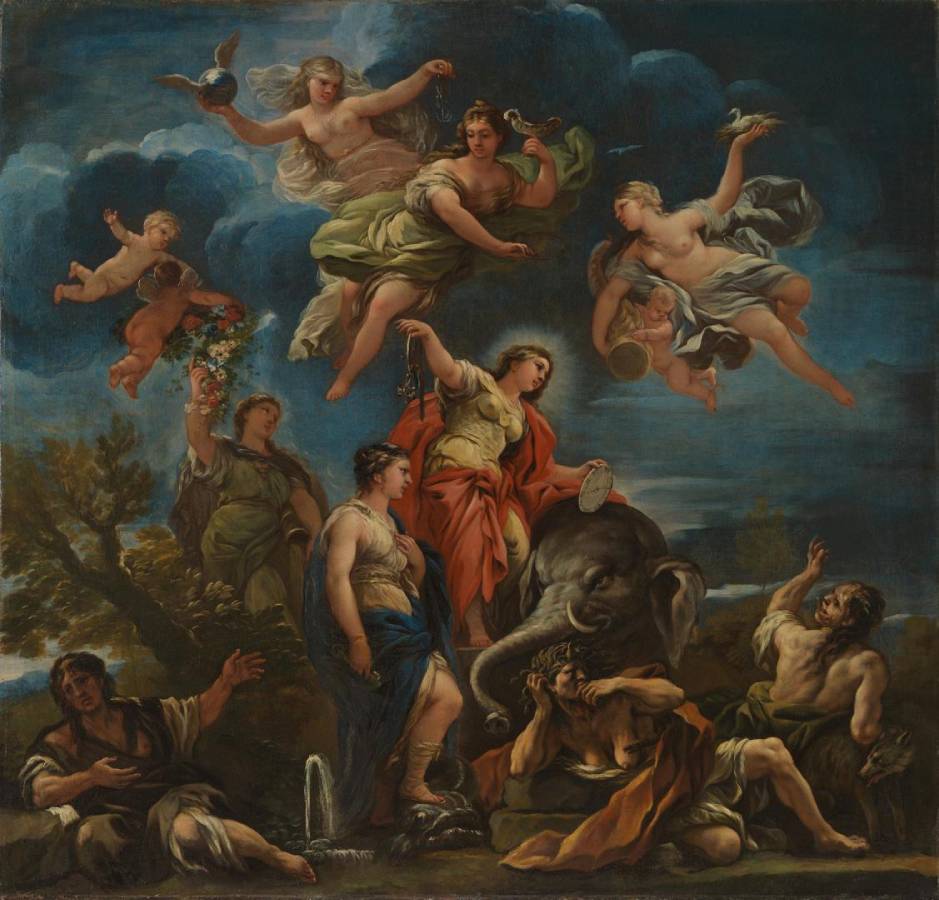Giordano, Luca (1634-1705)
Allegoria della Temperanza (Allegory of Temperance)
early 1680s
Oil on canvas, 97 x 101.3 cm
National Gallery, London
This modello, or detailed oil study, is one of a group of 12 that Giordano made in preparation for the ceiling frescoes in the Palazzo Medici Riccardi in Florence in 1682–85 (ten of the modelli are in the National Gallery’s collection). It corresponds with the group in the left corner of the barrel-vaulted ceiling, opposite the entrance to the grand Galleria and to the left of The Cave of Eternity.
The central figure represents Temperance, one of the four Cardinal Virtues. These were first identified by the philosopher Plato, and later adopted by the Roman Catholic Church. One Virtue is depicted in each of the four corners of the Galleria and they form part of a continuous frieze of allegorical and mythological scenes. In the finished fresco, four of the Medici family depicted in the centre of the ceiling are also given attributes representing each of the Virtues.
Here, Temperance is shown as a young woman wearing an armoured breastplate. She holds a bridle (indicating restraint) and a clock (indicating patience), and a halo-like radiance from behind her head lights up her determined expression. She is leaning on the head of an elephant, which was then regarded as the strongest but also the most cautious of animals. Beside her stands Sobriety, who holds a key (which was also the emblem of the Riccardi family) – she too has a steely look in her eye. The figure behind them probably represents Meekness, taking a suitably unassuming position in the line up; she is receiving flowers from two putti and pours oil or honey from a jar.
Together these figures of beauty and virtue, determination and moderation, are shown to triumph over three cowering hags who represent the effects of intemperance. Sloth languishes on the left, solitary and miserable. Envy, with shrivelled breasts and embraced by a snake, gnaws at her own forefinger. In the finished fresco, Giordano depicted her as a Gorgon, a legendary monster with snakes instead of hair. Meanwhile, to the right, Hunger chews on a bone and leans on a ravenous red-eyed wolf.
The figures flying above the scene are harder to interpret. On the right may be Tranquillity, with a cornucopia and a white bird in a nest – perhaps a dove, though it has been read as a seagull. In the centre, Youth carries an incense vessel and a ring in the form of a serpent biting its tail, a symbol of eternity. Behind her flies Voluptuousness, holding a winged sphere and fish hooks.
For the finished ceiling fresco, Giordano altered the composition so that Temperance is turning up towards Youth. He made similar changes to the postures of three of the four Virtues, presumably at the request of his patron, the Marquess Francesco Riccardi (only Fortitude keeps the same downward gaze employed in the modello). These alterations better suit the curvature of the ceiling and inject more energy and dynamism to the design, sending the eye up towards the centre of the room. Giordano’s changes to this particular scene also make it seem like Youth is shielding Temperance from the semi-naked figure of Voluptuousness above her; whether this alteration is significant or was done purely for aesthetic reasons is unclear. (NG)
Modelli for the Palazzo Medici Riccardi:
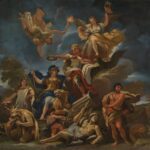 Giordano, Luca (1634-1705)
Giordano, Luca (1634-1705)
Allegoria della Fortezza
early 1680s
National Gallery, London
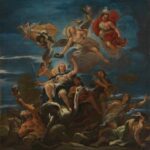 Giordano, Luca (1634-1705)
Giordano, Luca (1634-1705)
Allegoria della Giustizia
early 1680s
National Gallery, London
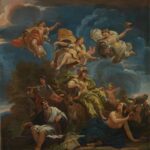 Giordano, Luca (1634-1705)
Giordano, Luca (1634-1705)
Allegoria della Prudenza
early 1680s
National Gallery, London
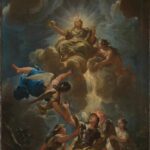 Giordano, Luca (1634-1705)
Giordano, Luca (1634-1705)
Allegoria della Sapienza Divina
early 1680s
National Gallery, London
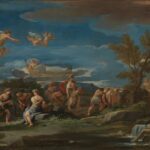 Giordano, Luca (1634-1705)
Giordano, Luca (1634-1705)
Allegoria dell’Agricoltura
early 1680s
National Gallery, London
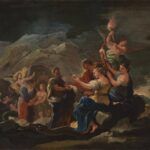 Giordano, Luca (1634-1705)
Giordano, Luca (1634-1705)
Antro dell’eternità
early 1680s
National Gallery, London
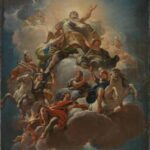 Giordano, Luca (1634-1705)
Giordano, Luca (1634-1705)
Apoteosi dei Medici
early 1680s
National Gallery, London
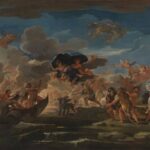 Giordano, Luca (1634-1705)
Giordano, Luca (1634-1705)
La barca di Caronte e il ratto di Proserpina
early 1680s
National Gallery, London
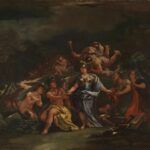 Giordano, Luca (1634-1705)
Giordano, Luca (1634-1705)
Minerva protettrice delle Arti e delle Scienze
early 1680s
National Gallery, London
This group of ten paintings was made by Giordano as a series of detailed oil studies (or modelli) for the ceiling frescoes in the Palazzo Medici Riccardi in Florence, which are among the artist’s finest achievements. The modelli are part of a set of 12 (the other two are in private collections).
Nine of the paintings relate to the ceiling of the highly ornate Galleria, built to house a precious collection of antiquities and function as a public reception room. The other is associated with the ceiling of the adjacent Library. The overall theme in the Galleria is the elevation of mankind through Wisdom and Virtue, using allegorical and mythological figures to represent different strengths and traits. It culminates in a centrepiece which presents the wealthy Medici family as the paradigm of both these qualities.
Giordano seems to have worked up these modelli to clarify his designs and may have presented them to his client, the Marquess Francesco Riccardi, for approval before the frescoes were executed. (NG)
